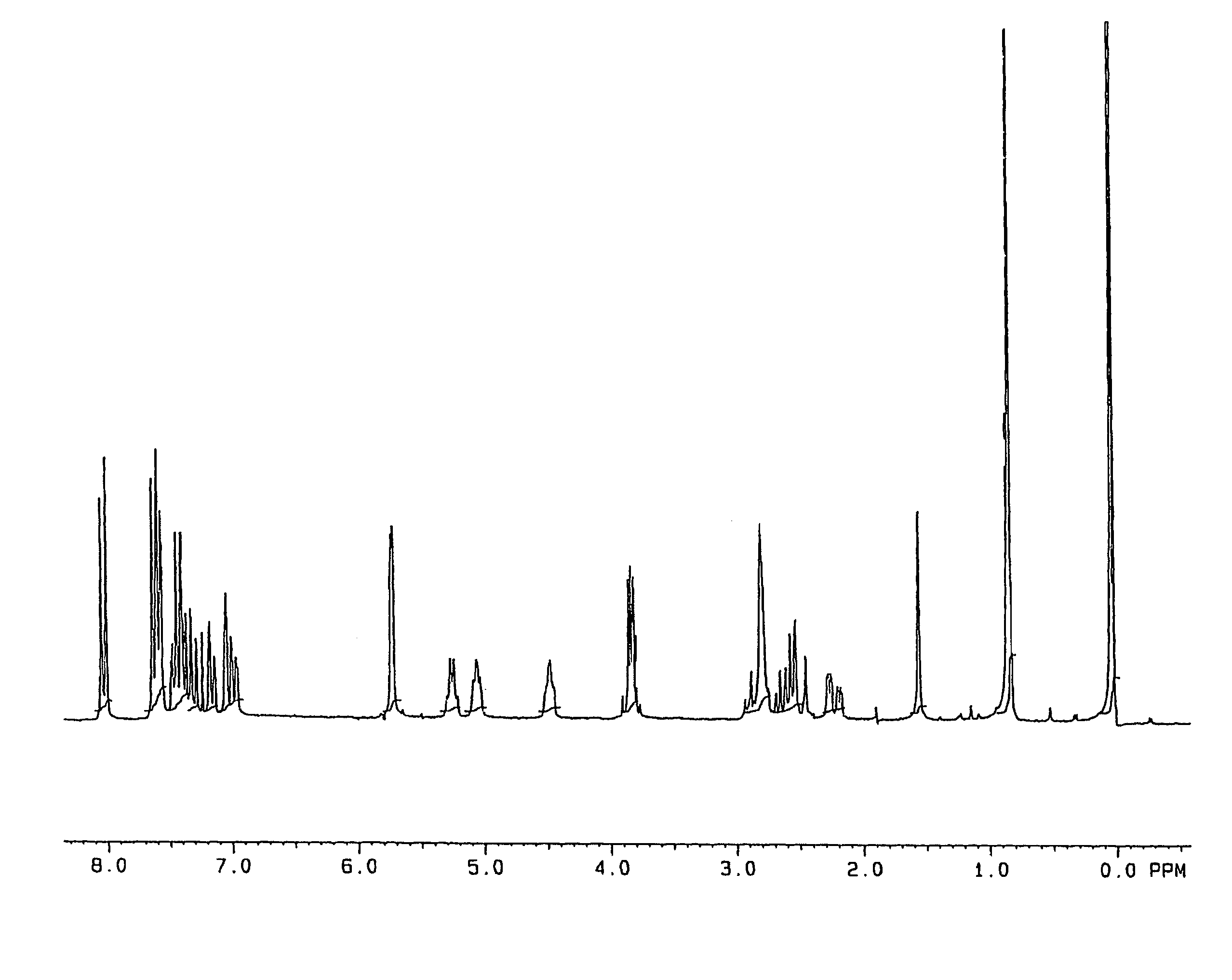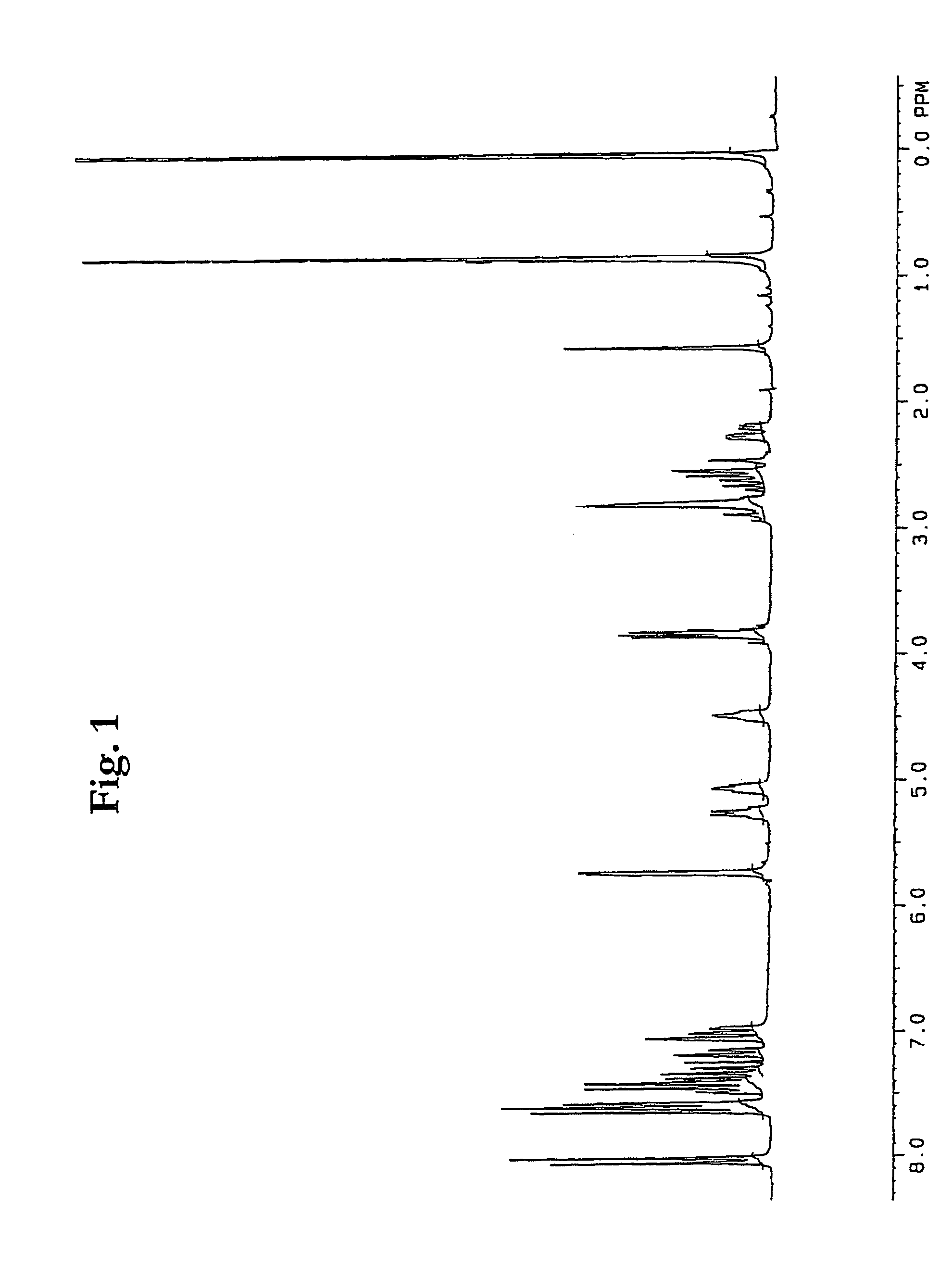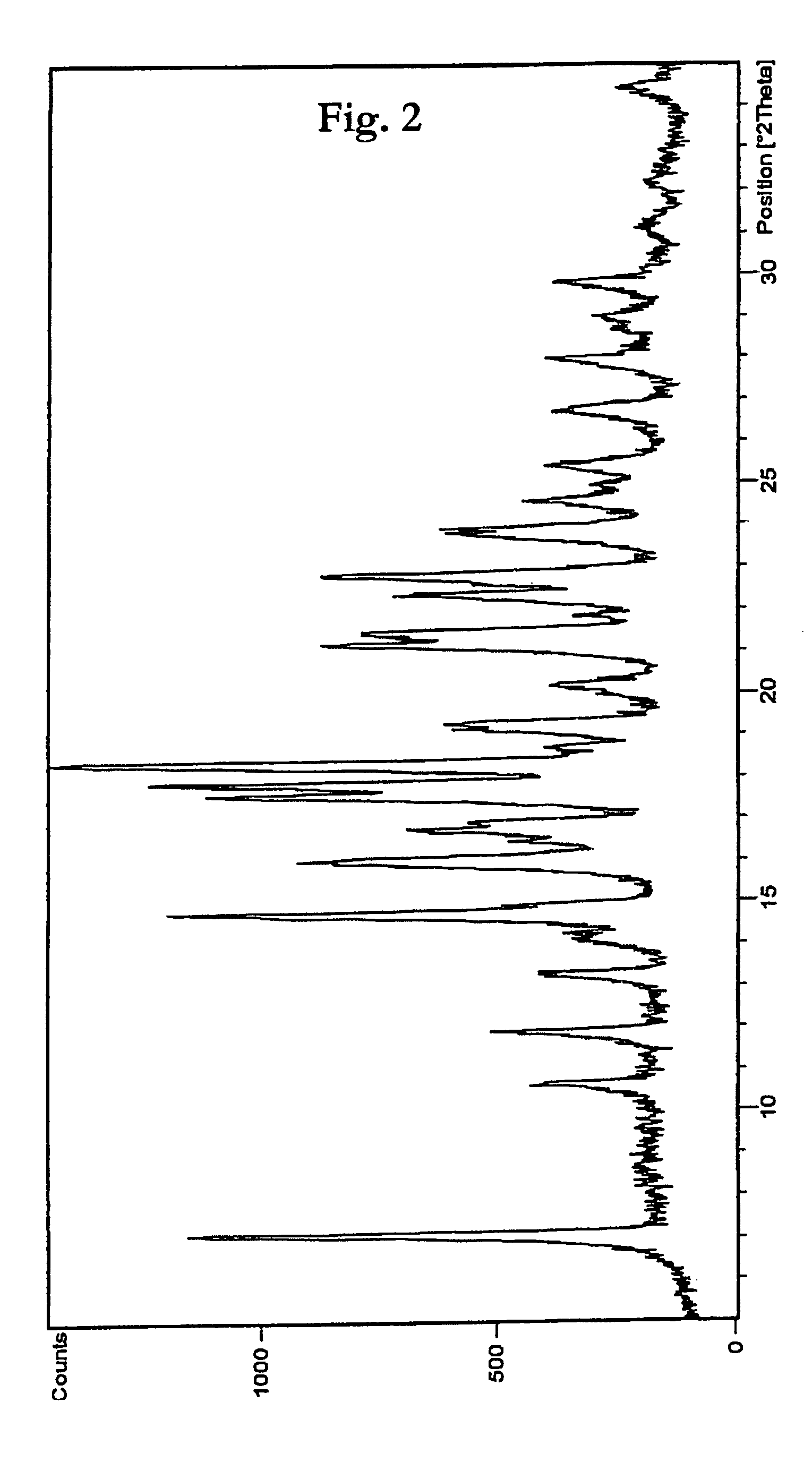Process for the preparation of prostaglandin derivatives
a technology of prostaglandin and derivative, which is applied in the field of process for the preparation of prostaglandins, can solve the problems of difficult scaling up the highly exothermic reduction with diisobutylaluminum hydride at such low temperature conditions, and low yield of desired products, and achieves good yield and desired purity
- Summary
- Abstract
- Description
- Claims
- Application Information
AI Technical Summary
Benefits of technology
Problems solved by technology
Method used
Image
Examples
example 1
1-Chloro-3-[3-(trifluoromethyl)phenoxy]-2-propanol
[0172]
[0173]A mixture of m-CF3C6H4OH (48.6 g, 0.30 mol), epichlorohydrin (138.8 g, 1.50 mol) and K2CO3 (20.7 g, 0.15 mol) was stirred at 70° C. for 2 h. Epichlorohydrin was evaporated in vacuo. Water (250 mL) was added and the resulting mixture was extracted with CH2Cl2 (2×50 mL). The combined organic extract was stirred with 32% HCl (50 mL) for 0.5 h at rt. The organic layer separated, dried over Na2SO4, filtered and concentrated in vacuo to give 76.2 g of crude 1-chloro-3-[3-(trifluoromethyl)phenoxy]-2-propanol which was used in next step without additional treatment.
[0174]1H NMR (CDCl3) δ: 7.39 (t, J=8.0 Hz, 1H), 7.22 (d, J=8.0 Hz, 1H), 7.13 (s, 1H), 7.07 (d, J=8.0 Hz, 1H), 4.21 (m, 1H), 4.10 (d, J=5.0 Hz, 2H), 3.75 (m, 2H), 2.65 (d, J=6.0 Hz, 1H).
example 2
1-Chloro-3-[3-(trifluoromethyl)phenoxy]-2-propanone
[0175]
[0176]10% aq. NaOCl (900 mL) was added dropwise to a stirred mixture of NaBr (30.9 g, 0.30 mol), NaHCO3 (50.4 g, 0.60 mol), water (200 mL) and a solution of 1-chloro-3-[3-(trifluoromethyl)phenoxy]-2-propanol (80.0 g from Example 1) and TEMPO (0.94 g, 6 mmol) in CH2Cl2 (100 mL) at 0 to 5° C. The mixture was stirred for 0.5 h at the same temperature and 10% aq. Na2S2O3.5H2O (150 mL) was added. The aqueous layer was separated and extracted with CH2Cl2. The combined organic layer was dried over Na2SO4, filtered trough thin layer of silica gel and concentrated in vacuo. A mixture of the residue and hexane (300 mL) was stirred for 1 h at rt and for 1 h at 0 to 5° C. The precipitate was filtered, washed on the filter with cold hexane and dried in vacuo to give 60.5 g of 1-chloro-3-[3-(trifluoromethyl)phenoxy]-2-propanone as off-white crystals: mp 38–39° C. 1H NMR (CDCl3) δ: 7.41 (t, J=8.0 Hz, 1H), 7.26 (d, J=8.0 Hz, 1H), 7.13 (s, 1H)...
example 3
1-Chloro-3-[3-(trifluoromethyl)phenoxy]-2-propanone semicarbazone
[0177]
[0178]A solution of 1-chloro-3-[3-(trifluoromethyl)phenoxy]-2-propanone (30.3 g, 0.12 mol) in MeOH (100 mL) was added dropwise to a stirred solution of H2NCONH2NH2.HCl (16.4 g, 0.15 mol) and KOAc (14.7 g, 0.15 mol) in water (250 mL). The mixture was stirred for 1 h. MeOH was evaporated from the mixture at 40° C. (water bath) in vacuo. The obtained mixture was extracted with EtOAc. The combined organic layer was washed with brine, dried over Na2SO4 and concentrated in vacuo to give 36.8 g (99%) of 1-chloro-3-[3-(trifluoromethyl)phenoxy]-2-propanone semicarbazone as off-white solid.
PUM
| Property | Measurement | Unit |
|---|---|---|
| temperature | aaaaa | aaaaa |
| temperature | aaaaa | aaaaa |
| temperature | aaaaa | aaaaa |
Abstract
Description
Claims
Application Information
 Login to View More
Login to View More - R&D
- Intellectual Property
- Life Sciences
- Materials
- Tech Scout
- Unparalleled Data Quality
- Higher Quality Content
- 60% Fewer Hallucinations
Browse by: Latest US Patents, China's latest patents, Technical Efficacy Thesaurus, Application Domain, Technology Topic, Popular Technical Reports.
© 2025 PatSnap. All rights reserved.Legal|Privacy policy|Modern Slavery Act Transparency Statement|Sitemap|About US| Contact US: help@patsnap.com



